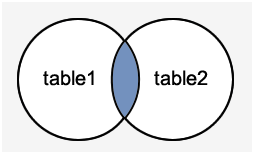

To filter groups, you use the GROUP BY with HAVING clause. Try It SQLite GROUP BY with HAVING clause
SQLITE INNER JOIN CODE
Tracks.albumid Code language: SQL (Structured Query Language) ( sql ) INNER JOIN albums ON albums.albumid = tracks.albumid You can query data from multiple tables using the INNER JOIN clause, then use the GROUP BY clause to group rows into a set of summary rows.įor example, the following statement joins the tracks table with the albums table to get the album’s titles and uses the GROUP BY clause with the COUNT function to get the number of tracks per album. Try It SQLite GROUP BY and INNER JOIN clause ORDER BY COUNT(trackid) DESC Code language: SQL (Structured Query Language) ( sql ) You can use the ORDER BY clause to sort the groups as follows: SELECT SELECTĪlbumid Code language: SQL (Structured Query Language) ( sql ) It uses the GROUP BY clause to groups tracks by album and applies the COUNT() function to each group. The following statement returns the album id and the number of tracks per album. SQLite GROUP BY clause with COUNT function

We use the tracks table from the sample database for the demonstration. In case a statement contains a WHERE clause, the GROUP BY clause must come after the WHERE clause.įollowing the GROUP BY clause is a column or a list of comma-separated columns used to specify the group. The GROUP BY clause comes after the FROM clause of the SELECT statement. SELECTĬode language: SQL (Structured Query Language) ( sql ) The following statement illustrates the syntax of the SQLite GROUP BY clause. For each group, you can apply an aggregate function such as MIN, MAX, SUM, COUNT, or AVG to provide more information about each group. The GROUP BY clause returns one row for each group. The GROUP BY clause a selected group of rows into summary rows by values of one or more columns. The GROUP BY clause is an optional clause of the SELECT statement.
SQLITE INNER JOIN HOW TO
We have a table called employees with four fields (employee_id, last_name, first_name, and position_id).Summary: in this tutorial, you will learn how to use SQLite GROUP BY clause to make a set of summary rows from a set of rows. Let's look at some data to explain how LEFT OUTER JOINS work: If a position_id value in the employees table does not exist in the positions table, all fields in the positions table will display as in the result set. This LEFT OUTER JOIN example would return all rows from the employees table and only those rows from the positions table where the joined fields are equal. Here is an example of a SQLite LEFT OUTER JOIN: SELECT employees.employee_id, employees.last_name, positions.title The SQLite LEFT OUTER JOIN would return the all records from table1 and only those records from table2 that intersect with table1. In this visual diagram, the SQLite LEFT OUTER JOIN returns the shaded area: In some databases, the LEFT OUTER JOIN keywords are replaced with LEFT JOIN. The syntax for the SQLite LEFT OUTER JOIN is: SELECT columns This type of join returns all rows from the LEFT-hand table specified in the ON condition and only those rows from the other table where the joined fields are equal (join condition is met). It contains the following data:Īnother type of join is called a SQLite LEFT OUTER JOIN.

We have a table called employees with four fields (employee_id, last_name, first_name, and position_id). Let's look at some data to explain how the INNER JOINS work: This SQLite INNER JOIN example would return all rows from the employees and positions tables where there is a matching position_id value in both the employees and positions tables. ON employees.position_id = positions.position_id Here is an example of a SQLite INNER JOIN: SELECT employees.employee_id, employees.last_name, positions.title The SQLite INNER JOIN would return the records where table1 and table2 intersect. In this visual diagram, the SQLite INNER JOIN returns the shaded area: The syntax for the INNER JOIN in SQLite is: SELECT columns SQLite INNER JOINS return all rows from multiple tables where the join condition is met. Chances are, you've already written a statement that uses a SQLite INNER JOIN.


 0 kommentar(er)
0 kommentar(er)
